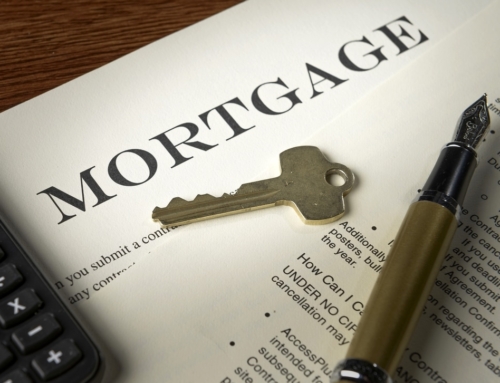My friend Rebeca, 25, took a job in Portland, Oregon last year. About four months ago, she decided the time had come to buy her first home.
She went to a mortgage broker who had helped some of her friends buy homes, and after she cleaned up a bit of identity theft (in the form of a stolen credit card that had been fully maxed out), he approved her for a loan of $297,000.
Which didn’t seem all that strange to her. So, she started to look at homes for sale priced at about $325,000 or less.
The thing is, my friend Rebeca earns about $35,000 per year. She is looking to buy a home that costs nearly 10 times her annual income. How can this be?
Mortgage lending has caused a stir recently on Wall Street, which buys the loans that lenders make to home buyers and homeowners. Fannie Mae and Freddie Mac, the two secondary market loan leaders are at the top of the pack when it comes to bundling up hundreds of thousands of loans, turning them into securities and selling them to investors.
But conventional loans, in which Fannie Mae and Freddie Mac specialize, require that borrowers spend no more than 28 percent of his or her gross monthly income on their mortgage, taxes and insurance, and no more than 36 percent of gross monthly income on total debt.
Non-conforming lenders are those who don’t resell their loans to Fannie Mae and Freddie Mac, but to other investors who are willing to take on more risk. But increasing the risk doesn’t just mean lending to folks who have a low credit score. It can also mean lending without supporting documentation (the so-called “no-doc” or “light-doc” loans), or without paying any attention to debt-to-income ratios.
“What really is income?” asks Dick Lepre, a long-time mortgage lender with RPM Mortgage in San Francisco. “Someone may appear to be earning $25,000 per year, but is that person really making that? We determine underwriting income from regular income and from Schedule C income. But self-employed people beat up their Schedule C because they’re deducting what someone with a W2 is spending, like for a car-payment. The mortgage industry gives elbow room to self-employed borrowers.”
Ultimately, there has to be enough income to pay the mortgage each month, although how much you can pay to buy and live in a home has become quite flexible. You can choose a standard principal and interest loan that is amortized over 15 or 30 years. Or, you can choose an interest-only loan, which requires that the borrower pay only interest for the first 5 or even 10 years of the loan. At that point, the loan converts into a conventional principal and interest loan, amortized over the number of years remaining in the 30-year loan term, typically 25 or 20.
Or, you can choose to use a loan called an “Option ARM.” An option ARM is an adjustable rate mortgage that starts out with an interest rate as low as 1 percent. The loan doesn’t really have an interest rate at 1 percent (not when the Federal Funds rate is now over 3 percent). But the loan allows the borrower to pay an artificially low interest rate for the first five years, or until you owe 110 percent of the loan amount.
That’s right. If you boil away all the hype, an option ARM is nothing more than a negative amortization loan with a cool marketing spin. At the end of five years of underpaying the actual interest owed on the loan (which is currently accruing at about 6 percent), you’d owe about 10 percent more than what you originally borrowed.
On Rebeca’s $300,000 Option ARM mortgage, she would owe $330,000 by month 56, or four months shy of 5 years into the loan.
Imagine the payment shock when the option ARM loan converts into something approaching conventional.
“The monthly payment on an Option ARM is a lot less because what you’re paying is far less than interest only. If the conventional interest rate is 6 percent, this loan carries an interest rate as low as 1 percent,” Lepre explains.
It turns out that the mortgage lender likely qualified Rebeca to buy a $325,000 home with an “Option ARM.”
Here’s how the loan numbers play out: With a conventional mortgage at 5.75 percent that is fully-amortized, Rebeca would probably pay about $1,750 per month for her principal and interest payments.
But with an Option ARM (adjustable rate mortgage), her monthly payments for the first 5 years would be just $965.
With her take-home pay of $2,000 per month, paying $965 for her mortgage isn’t much of a stretch – especially since Rebeca plans on renting out two of the three bedrooms in the house for about $900 per month. Except for taxes and insurance (which should run about $300 per month), she would be living for less than the $700 per month she’s paying now for her one-bedroom apartment.
“Using an Option ARM is like renting your house instead of buying it,” Lepre says.
It’s not that creative financing like an Option ARM isn’t a good choice for some people. If you’re only going to live in a house for 4 or 5 years and will then sell it, and if you have enough equity in the house to cover the additional interest payments that will be tacked onto your loan balance, then it might be an interesting financing choice.
Or, if you’re going to be fixing up your home and want to spend all of your cash on your renovation rather than interest payments, and the house will be worth a lot more after you’re finished, then an Option ARM might work as well.
But the concern isn’t that some borrowers have legitimate reasons for choosing this sort of financing. It’s that people like Rebeca are being sold a loan without understanding the true costs or the long-term consequences.
Unfortunately, with an Option ARM, the clock starts ticking less than five years after you close on your new home.
Published: Aug 19, 2005






Leave A Comment